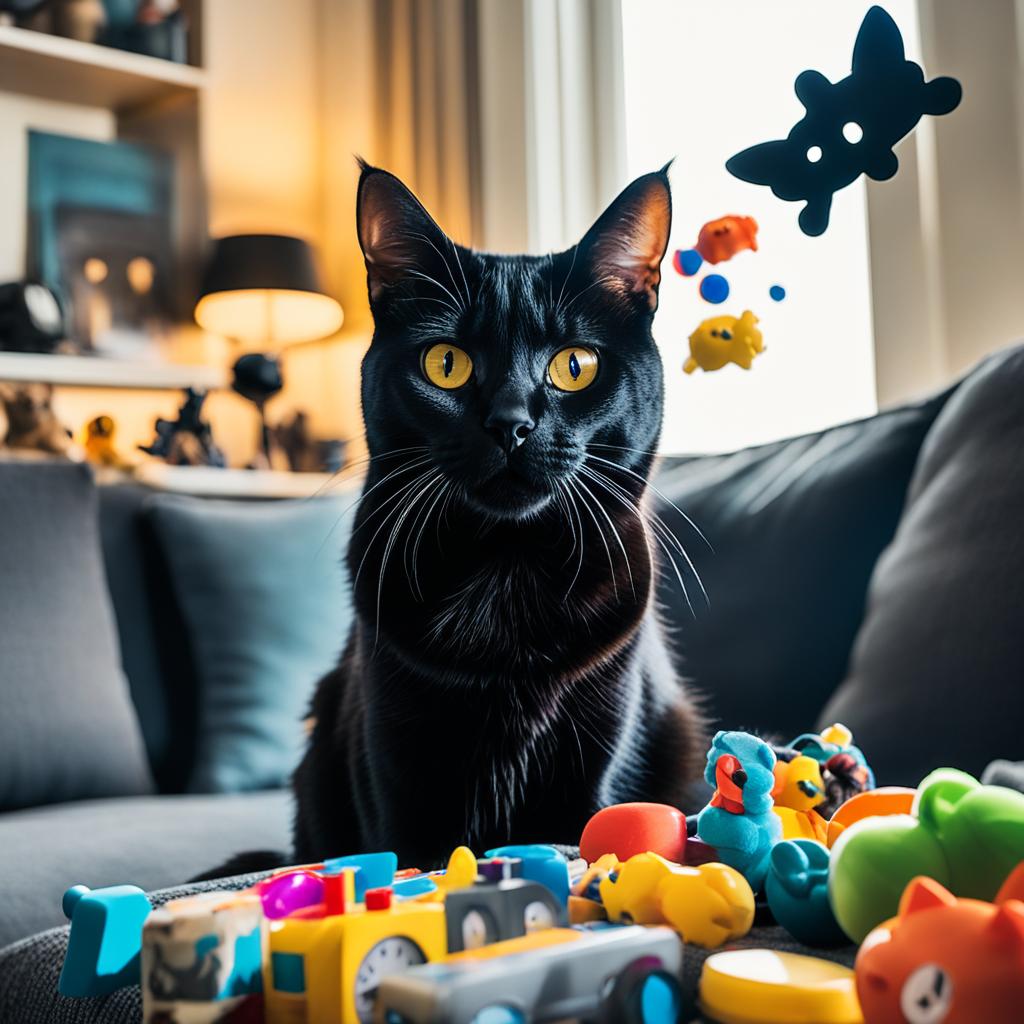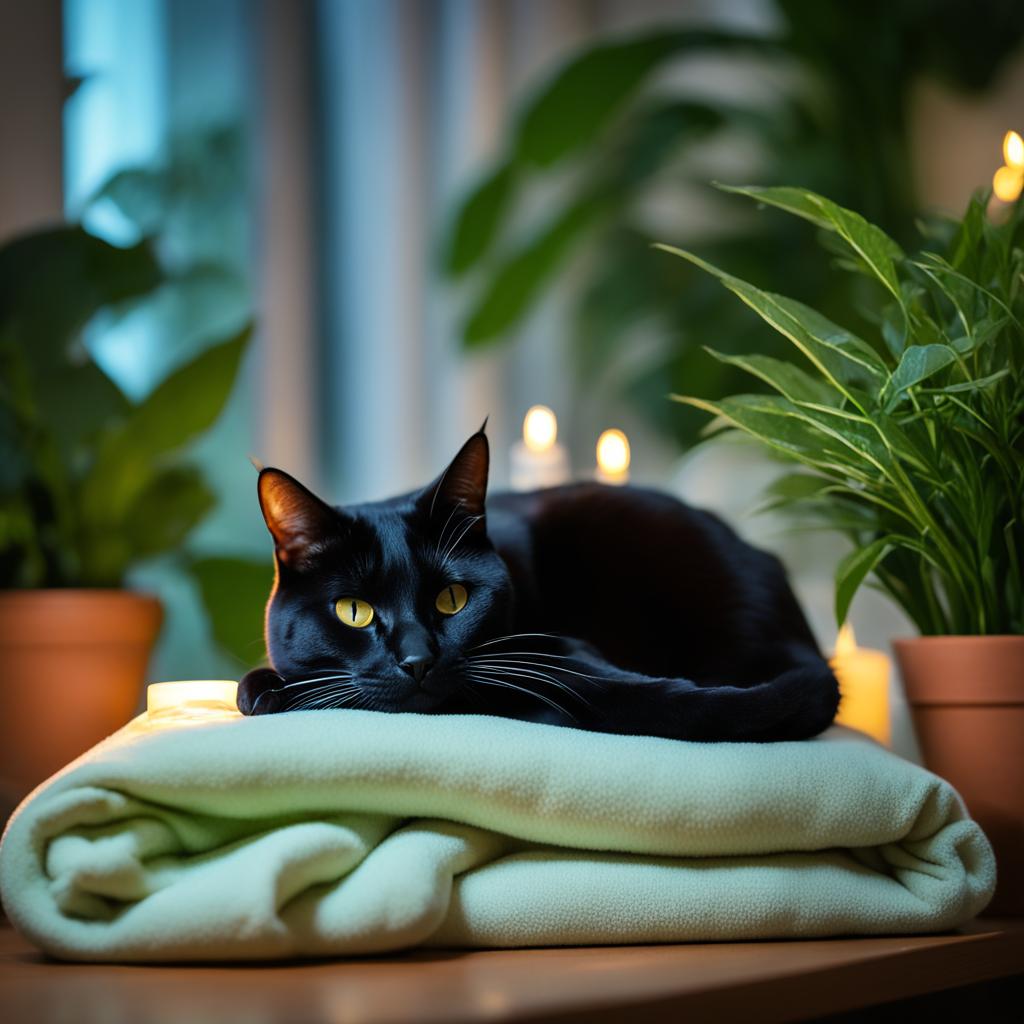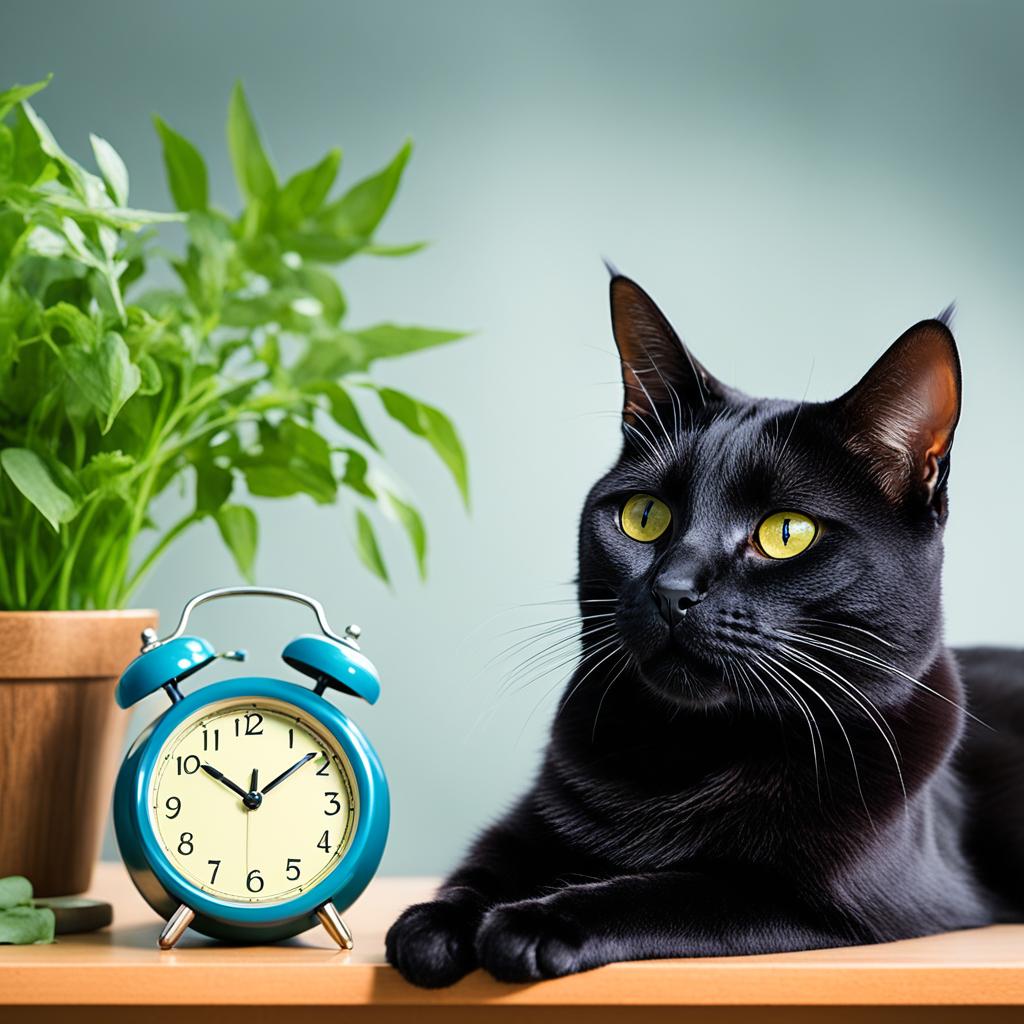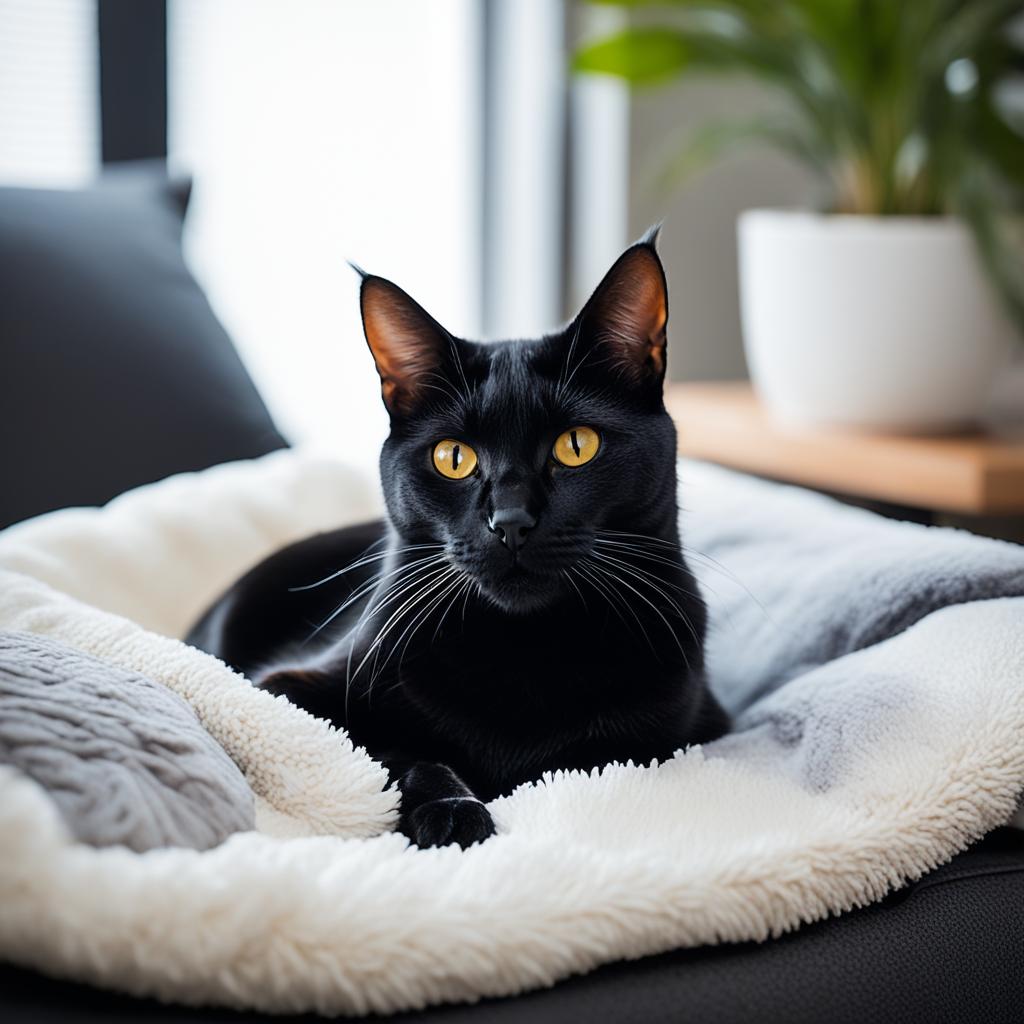Have you ever wondered why your seemingly independent Bombay Cat turns into a ball of anxiety when you’re not around? These affectionate felines, known for their attachment to their owners, can often suffer from separation anxiety. Despite their confident demeanor, a disrupted routine can leave them feeling stressed and out of sorts. But worry not, with the right attention, a consistent routine, and calming techniques, you can effectively manage separation anxiety in your Bombay Cat.
Key Takeaways
- Bombay Cats, despite their independent streak, can suffer from separation anxiety.
- Common signs include destructive behavior, excessive meowing, and changes in eating habits.
- Establishing a daily routine can significantly soothe your cat’s anxiety.
- Using calming techniques like pheromone sprays can relieve stress.
- Providing environmental enrichment can prevent and reduce anxiety.
Understanding Separation Anxiety in Your Bombay Cat

Separation anxiety in your Bombay Cat is more common than you’d think. Even though these sleek, midnight-colored felines are known for their independence, they can become incredibly stressed when left alone. Knowing how to handle Bombay Cat separation anxiety starts with recognizing that your cat’s behavior issues stem from genuine anxiety.
So, how do these Bombay Cat behavior issues manifest? Your normally chill kitty might turn into a tiny furry tornado, engaging in destructive activities like shredding your favorite couch or knocking over anything not nailed down. Excessive vocalization is another key indicator; your cat’s incessant meowing or yowling is a cry for help. And let’s not forget changes in appetite – they might refuse to eat, leaving those pricey organic kibbles untouched.
Understanding and coping with Bombay Cat anxiety involves acknowledging these stress signs. It’s the first step in creating a strategy that soothes their turbulent emotions.
Recognizing that even the most independent pets can suffer from separation anxiety is essential. By observing these behavioral cues, you’ll be more equipped to mitigate their distress and foster a more harmonious environment for both you and your Bombay Cat.
| Behavior Issues | Signs | Strategies |
|---|---|---|
| Destructive Behavior | Scratching furniture, knocking over items | Provide scratching posts, use repellant sprays |
| Excessive Vocalization | Meowing, yowling, howling | Use calming pheromones, interactive playtime |
| Changes in Eating Habits | Refusing to eat, overeating | Maintain a routine, consult a vet |
Common Signs of Separation Anxiety in Bombay Cats

When your Bombay Cat’s seemingly independent nature takes a turn, they might be silently crying out for help. Understanding and recognizing these signs can pave the way for better companionship and support.
Destructive Behavior
One of the most telltale signs of separation anxiety in your furry friend is destructive behavior. Scratching furniture and other household items often signifies a cry for Bombay Cat emotional support. While no couch is invincible, providing targeted toys and addressing this behavior head-on can minimize the damage.
Excessive Meowing
If your typically quiet companion turns into a feline opera singer when you’re away, it’s a sign they’re struggling. Excessive vocalization, like meowing and yowling, is their way of expressing distress. Finding effective ways of coping with Bombay Cat anxiety, such as using calming techniques, can significantly help in reducing this vocal plea.
Changes in Eating Habits
Any sudden shift in your Bombay Cat’s eating habits is worth noting. Refusing to eat or overindulging when alone may indicate they need more emotional and psychological support. Paying close attention to these changes and providing adequate Bombay Cat emotional support can ensure they stay healthy and happy.
How to Handle Bombay Cat Separation Anxiety?

Dealing with separation anxiety in your Bombay Cat requires a multi-faceted approach. Start by creating a safe and enriching environment. This can be as simple as designating a cozy corner with your cat’s favorite bed and toys. Bringing attention to is equally vital. This comforting space becomes a sanctuary for your little feline during your absence.
Maintaining a consistent routine is another crucial element for handling Bombay Cat separation anxiety. Your cat thrives on predictability, so feeding, playtime, and sleep schedules should be kept as regular as possible. This helps minimize the stress that stems from uncertainty and change.
Additionally, investing in products designed for Bombay Cat stress relief can work wonders. Consider using pheromone diffusers or calming collars, which release soothing scents that help reduce anxiety. Also, incorporating interactive toys that challenge your cat’s mind can keep them occupied and distracted from your absence.
Recognizing the signs early and implementing preventative measures can greatly aid in managing how to handle Bombay Cat separation anxiety. By taking these steps, you create a peaceful atmosphere that benefits both you and your feline friend.
- Create a safe environment
- Maintain a consistent routine
- Use calming products
- Interactive play
Causes of Separation Anxiety in Bombay Cats

Understanding the causes of separation anxiety in your Bombay Cat can significantly help in mitigating this challenging condition. Here, we explore the primary reasons behind this behavioral issue.
Early Weaning
One of the main causes of separation anxiety in Bombay Cats is early weaning from the mother. This early separation can cause lasting effects, leading to anxiety issues as they develop. If your feline companion exhibits signs of distress, these Bombay Cat separation anxiety tips can be particularly useful.
Insufficient Environmental Enrichment
Lack of environmental enrichment can also lead to separation anxiety. Bombay Cats are known for their curious and playful nature. When they’re deprived of stimulating activities, they can quickly become bored and frustrated. Implementing engaging activities and toys can provide the necessary Bombay Cat stress relief they need.
Changes in Routine
Bombay Cats thrive on routine. Sudden changes to their daily patterns, such as shifting meal times or moving homes, can trigger anxiety. Being consistent with their daily rituals can ease their stress significantly. Utilize Bombay Cat separation anxiety tips to help smooth out transitions and maintain a steady environment for your pet.
| Cause | Impact | Relief Tips |
|---|---|---|
| Early Weaning | Anxiety from a young age | Gradual exposure to independence |
| Insufficient Environmental Enrichment | Boredom and frustration | Enriching activities and toys |
| Changes in Routine | Stress from inconsistency | Maintain daily rituals |
Preventative Measures for Bombay Cat Separation Anxiety

Dealing with separation anxiety in your Bombay Cat might seem like a daunting task, but with the right preventative measures, you can ensure your furry companion feels secure and content even when you’re away. These proactive steps include creating a consistent routine, gradually increasing alone time, and incorporating enriching toys and activities.
Creating a Consistent Routine
Establishing a predictable daily routine can work wonders in coping with Bombay Cat anxiety. Cats thrive on consistency, so feeding, playing, and sleeping should occur at the same times each day. This sense of predictability can provide your Bombay Cat with much-needed security.
Gradual Alone Time
To prevent anxiety, you should start by leaving your Bombay Cat alone for short periods and gradually increase the duration over time. This can foster independence and reduce stress. The key here is to be patient; rushing this process can lead to setbacks.
Enrichment Toys and Activities
Enriching your Bombay Cat’s environment is crucial for mental stimulation and coping with separation anxiety. Interactive toys, puzzle feeders, and climbing structures can keep your cat occupied and engaged, providing much-needed Bombay Cat emotional support. Regular playtime also strengthens your bond and keeps their predatory instincts sharp.
Effective Ways to Calm an Anxious Bombay Cat

Worried about leaving your Bombay Cat home alone? Fear not! There are proven methods to ease their anxiety and keep them calm. Below are three essential techniques to consider for achieving Bombay Cat stress relief.
Using Calming Pheromone Sprays
Pheromone sprays are a game-changer when it comes to calming a timid Bombay Cat. These sprays release synthetic versions of natural feline pheromones, creating a soothing environment that your furry friend will appreciate. Just a quick spritz in their favorite lounging spots can alleviate their stress and make being home alone less daunting.
Establishing Safe Spaces
Every cat needs a sanctuary, especially when they are feeling anxious. Designate a quiet safe space with comfy bedding, familiar toys, and perhaps even a calming pheromone spray. This gives your Bombay Cat a retreat where they can unwind and feel secure, thereby easing their nerves and ensuring effective Bombay Cat stress relief.
Interactive Playtime
Engaging your Bombay Cat in interactive playtime is not only fun but also essential for reducing their anxiety. Use toys that stimulate their natural hunting instincts, such as feather wands or laser pointers. Regular interactive play sessions not only burn off excess energy but also build a strong bond, making your time apart more manageable when you need to leave your Bombay Cat home alone.
The Role of Diet in Managing Stress for Bombay Cats

Ensuring your Bombay Cat enjoys a balanced and nutritious diet can work wonders for managing their stress levels. These sleek, endearing felines may exhibit signs of separation anxiety, but appropriate dietary choices can significantly soothe their concerns. When selecting a diet, it’s important to consider their life stage, as kittens have different nutritional needs compared to adult cats.
A delightful aspect of Bombay Cat care tips is how their diet directly impacts their mental and physical well-being. Incorporating high-quality proteins, essential fatty acids, and hydration into their meals can ameliorate stress responses. You might wonder how to spot an imbalance in their diet. Look for signals like weight fluctuations or changes in coat quality.
To keep your Bombay Cat in tip-top shape, discussing their dietary needs with your veterinarian is crucial. They can recommend specific formulations tailored to your feline’s unique requirements. These Bombay Cat care tips will ensure your little panther thrives emotionally and physically.
| Nutrient | Benefit | Source |
|---|---|---|
| Protein | Supports muscle maintenance | Chicken, fish, turkey |
| Omega-3 Fatty Acids | Reduces inflammation | Fish oil, flaxseed |
| Fiber | Improves digestion | Pumpkin, green beans |
Integrating these Bombay Cat separation anxiety tips with an emphasis on diet can prevent numerous stress-related illnesses, ensuring your furry friend leads a joyful and serene life.
Bonding Techniques to Reduce Separation Anxiety

Building a strong bond with your Bombay Cat can work wonders in alleviating their separation anxiety. By integrating the right bonding techniques, you can foster a secure and loving environment for your feline friend. Let’s dive into some practical approaches to enhancing that special bond.
Quality Time with Family Members
Nothing speaks Bombay Cat emotional support more than quality time! Spending meaningful moments with your cat can significantly ease their anxiety. Engage them in activities like interactive play, snuggle sessions, and grooming. These shared experiences not only meet their physical and emotional needs but also make them feel cherished and secure.
Positive Reinforcement Training
Embrace the power of positive reinforcement training for cats in your routine. This technique involves rewarding desirable behaviors with treats, praise, or affection. It helps build trust and encourages positive interactions. By using bonding techniques for Bombay Cats, you reinforce good behavior, diminishing anxiety and fostering a happier, more confident kitty.
Training Your Bombay Cat to Be More Independent
Getting your Bombay Cat to embrace a little “me-time” while you’re away can be both a playful and rewarding journey. Training Bombay Cats to be more independent doesn’t just help them when they’re home alone; it also boosts their confidence and keeps their agile minds active. A strategic mix of engaging activities can pave the way for a happier and well-adjusted feline companion.
Encouraging Self-Play
One practical approach is to introduce toys that don’t need human interaction. These toys, such as automated laser pointers or battery-operated mice, keep your Bombay Cat entertained, reducing the chances of stress-related behaviors. Self-play toys are an excellent way to encourage your pet to be more engaged and less reliant on you for constant entertainment. By promoting such independent playtime, you’re enabling your feline friend to have loads of fun while you’re not around.
Using Puzzle Feeders
Puzzle feeders are another fantastic tool for training Bombay Cats to be more independent. These feeders not only serve the practical purpose of feeding but also stimulate their natural hunting instincts. The challenge of getting food from a puzzle feeder keeps them occupied and mentally stimulated, significantly reducing anxiety. Integrating puzzle feeders into their daily routine can make alone time more enjoyable and nutritious.
By using these methods to encourage self-sufficiency, you’re not just addressing the needs of your pet; you’re making sure that when your Bombay Cat is home alone, it’s a positive and enriching experience. With a little creativity and the right tools, training your cat to be more independent can be a fun and rewarding endeavor for both of you.




